#History of Textiles
Explore tagged Tumblr posts
Text
Time Travel Question 79: Miscellaneous III
These Questions are the result of suggestions from the previous iteration.
This category may include suggestions made too late to fall into the correct grouping.
Please add new suggestions below if you have them for future consideration.
#Time Travel#Queer History#20th Century#El Dorado Club#Berlin#1920's#The Future#24th century#Ancestral Puebloan Culture#Indigenous History#Chaco Culture#Mesa Verde#matter synthesis#Future Tech#Post Scarcity#Textile Mills#Harrapans#Textiles#History of Textiles#History of Clothes#Space Exploration#Space#Future Medicine#Georges Méliès#Stage Magic#The Grauballe Man#Bog Mummies#Canadian Prairie Cultures#1300#1st Nations History
63 notes
·
View notes
Text
114 notes
·
View notes
Text
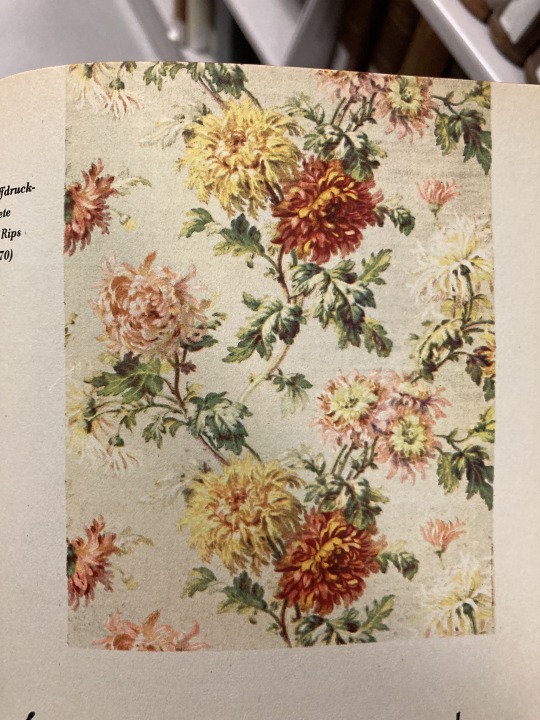


Wallpaper Wednesday
Need some wallpaper inspo? While flipping through this German textile book, I started to miss the days when house walls were covered with wallpaper, whether audacious and gaudy or decorative and ornate, I just miss it.
Who's a fan of wallpaper?
Bunter Traum auf gewebtem Grund : aus der Wunderwelt des Stoffdrucks (1938)
#wallpaper#wallpaper wednesday#textiles#history of textiles#history of fashion#fabric#textile arts#fiber arts#othmeralia
40 notes
·
View notes
Video
Oh my god I’ve definitely seen versions of these styles and never realized they were achieved without tailoring, this is delightful
cr: 百变花央
119K notes
·
View notes
Text
Oscar de la Renta: 'Crafted like a mosaic, discover the making-of the #odlrfall2024 stained glass gown — ushering in a a new House-signature embroidery technique.'

Constructed from hundreds of polyamide panes, hand-sewn together in an Art Nouveau style reminiscent of Tiffany glass. Ready-to-wear: £36,546.


#oscar de la renta#fashion#savoir faire#metiers d'art#video#process video#fall 2024#stained glass#couture embroidery#construction#atelier#2024#pattern#surface pattern#surface pattern design#pattern design#textile design#textiles#wisteria#flowers#floral#polyamide#plastic#art nouveau#tiffany glass#louis comfort tiffany#art history#design history
38K notes
·
View notes
Text
Historical context is of course very useful for important things like Politics and Science and everything, but will also open your eyes to things like, uh... the way the clothing/textile/crafting industries try to use the word "natural" as an excuse to sell shoddy and bad quality goods and make you think that's normal.
God knows there are worse things going on in the world, but it really pisses me off when I see companies advertising "Real Shell/Pearl buttons!" like that's supposed to be some upscale selling point, and the buttons in question are the thinnest, roughest, most crudely-made buttons in existence... 🙄😒 "But they're made from Natural Materials! You can't expect Natural Materials to look refined and consistent like synthetic ones!" They are lying to you. THEY ARE LYING TO YOU! And I know this because I've seen "real shell buttons" from 100 or even 50 years ago. And most of them are sturdy and smoothly polished, of a consistent thickness, and sometimes even finely carved. The buttons on nice men's dress shirts? Those are the cheap, plastic IMITATIONS of what people expected actual mother-of-pearl buttons to look like! "Natural" isn't an excuse! Your product is cheap and badly and lazily made! And I'm so sick of this, because I see it EVERYWHERE. "Linen-look" has become shorthand for "coarsely woven fabric with visible slubs" and that drives me CRAZY because do you KNOW what kinds of linen I have seen??? Antique linen so light and fine and smooth you can't even SEE the weave unless you magnify it!!! A fragment of a linen damask tablecloth so smooth and glossy, it looks like SILK? 😭 (On that note, "dupioni silk" is so roughly woven that it would have been considered hardly fit to sell a century ago) "This fabric is woven of Natural Materials, so imperfections will be inevitable!" 🙃 No! 😀 You just made it cheaply and sloppily, and that was your choice! 😊
17K notes
·
View notes
Text

Steiff, felt may bug on wheels
circa 1916
5K notes
·
View notes
Text
Ok but this is part of the reason I ended up doing a textiles degree, there’s something so ineffably powerful about learning the language and somatic experience of an ancient craft.
When my weaving professor was teaching us how to thread a floor loom, she sat down on the bench, paused before she began and said, “however you learn to thread a loom is how you’ll do it for the rest of your life.” I got chills. She’s right. I haven’t woven on a floor loom since college, but if I have occasion to do so again, I’ll do it exactly as Doris taught me, as her instructor taught her, as every weaver that came before learned the textile tools of their time for thousands and thousands of years into the past.
The floor loom/treddle loom is a relatively new technology, a cursory Google search says 10th century CE (Islamic golden age baybee). Band looms, horizontal ground looms and vertical, warp-weighted looms are much, much older.
Going back to language, let’s talk about funny weaving terms like “treddle.” So many terms from weaving and adjacent crafts just SOUND so old, and many do come from old or Middle English.
Terms like treddle bobbin, heddle, weft and spindle don’t have the Latin or Greek roots we see in many other english words, and I’m not an etymologist but I’d take a gander that they stated the way they did because people already had such a sophisticated vocabulary for teaching and discussing weaving (in most preindustrial cultures, a massive chunk of the population was involved some way in textile production) that they didn’t need to update their terms.
Anyway part of one’s initiation into the art of weaving is the learning all the proper names of things, because knowing the difference between “heddle” and “treddle” is absolutely KEY to understanding how cloth is made on an floor loom. My classmates and I had a quiz on the first week where we had to label a poorly photocopied diagram of a loom something like this:

Look at those terms. Look at em!
What a time.
One of my favorite things about learning about traditional textiles is the little ghosts they left in the language. Of course the ghosts are there, now that I know to look for them. Once upon a time, half the population spent a majority of their day making textiles. Spinning, at the very least, has been a part of humanity since the Neanderthals. That kind of knowledge doesn't just disappear.
A heckle was a device with sharp metal spikes, and people drag flax through the spikes to separate out the fibers from the chaff. When you say someone heckled a performer, you think you are being literal but you're speaking in an ancient metaphor.
When my grandpa says "spinning yarns" to mean telling stories, he knows that one's not quite literal, but its vividness is lost to him. There is no image in his mind of rhythm, muscle memory, and the subtle twist that aligns clouds of fibers into a single, strong cord.
When a fanfic writer describes someone carding their fingers through someone's hair, that's the most discordant in my mind. Carding is rough, and quick, and sometimes messy (my wool is full of debris, even after lots of washing). The teeth of my cards are densely packed and scratchy. But maybe that's my error, not the writer's. Before cards were invented, wool was combed with wide-toothed combs, and sometimes, in point of fact, with fingers. The verb "to card" (from Middle English) may actually be older than the tools I use, archaic as they are. And I say may, because I can't find a definitive history. People forget, even when the language remembers.
#linguistics#history of textiles#weaving#textile art#textiles#metaphor#old english#middle english#loom#fiber crafts#art history#anthropology
34K notes
·
View notes
Text
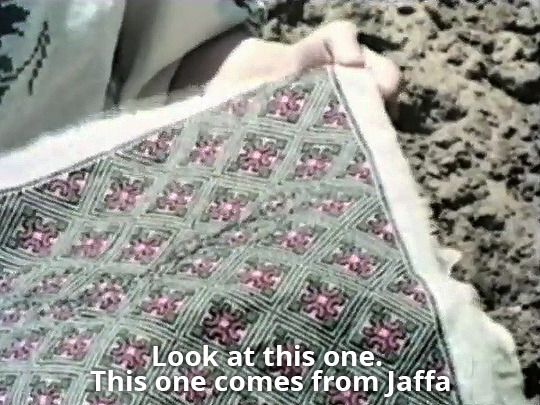
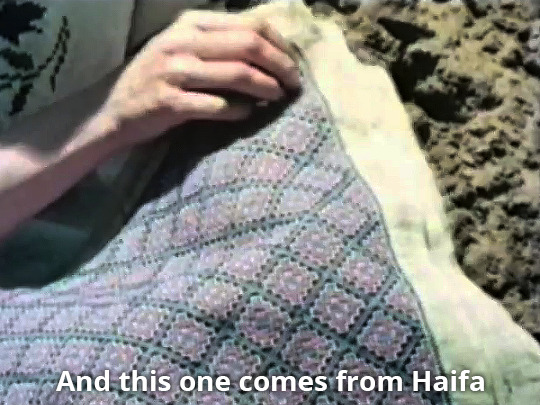
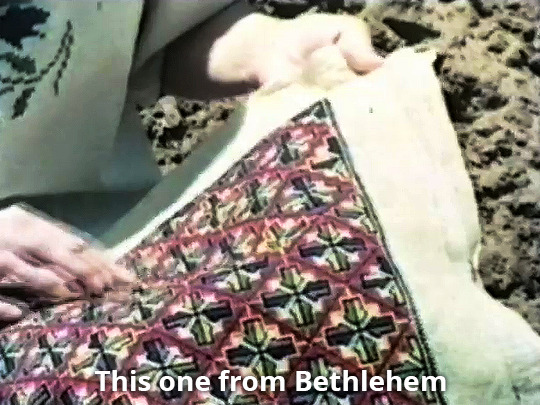
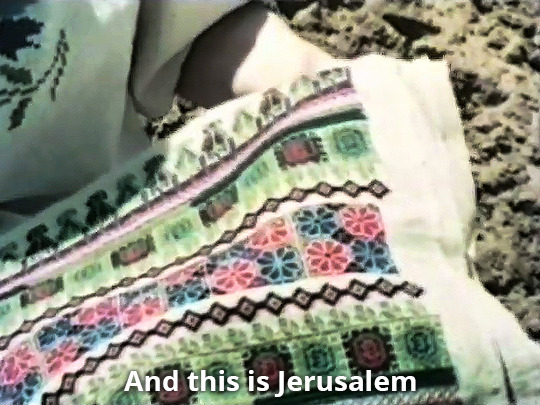
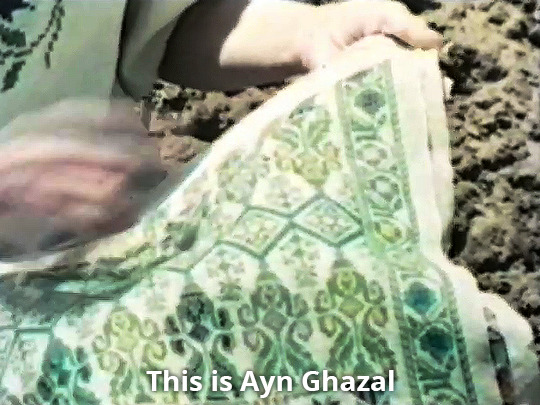
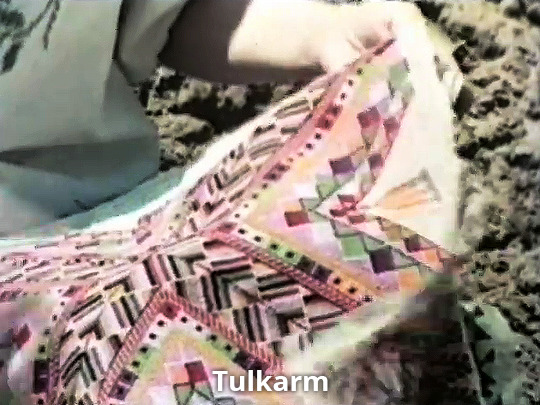
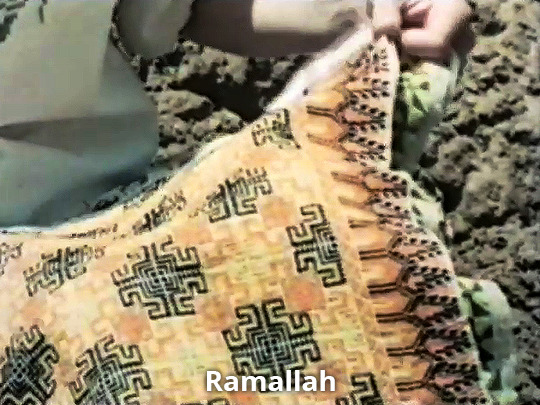

The Palestinian (1977)
#the palestinian 1977#vanessa redgrave#gaza#ramallah#tulkarm#ayn ghazal#jerusalem#bethlehem#haifa#jaffa#documentary#screencaps#post#history#tatreez#artistry#jerusalem and tulkarem my favess#textiles#art
56K notes
·
View notes
Text

1. 19th century sealskin thong, Greenland
2. Pazyryk swan made of felted reindeer wool, circa 400 BCE, Siberia
3. Child’s hat with bird, nalbound cotton and wool, 1000–1476 CE, Chancay culture, Peru
4. Knitted cotton sock from Egypt, 1000-1200 CE
5. Sidonian flask shaped like a date, 1st-2nd century CE, Syria or Palestine
6. World’s oldest surviving pants, woven wool, circa 1300-1000 BCE, China
10K notes
·
View notes
Text
Time Travel Question 82: Miscellaneous V
These Questions are the result of suggestions from the previous iteration.
This category may include suggestions made too late to fall into the correct grouping.
Please add new suggestions below if you have them for future consideration.
#Time Travel#Etruscans#Necropolis#Cerveteri#Ancient World#Joust-A-Bout#Dschunke ride#Great Adventure#Defunct Rides#Amusement Park#20th Century#Jōmon period#Japanese History#African History#Ancient History#History of Textiles#Fashion History#Silk#Asian history#Chinese History#Tierra del Fuego#Indigenous History#Mesolithic#Pre-History#Yangshao culture
25 notes
·
View notes
Text
Real talk, my History of Textiles class was the most mind-expanding class I’ve ever had. For anyone interested in the subject, I also highly recommend Women’s Work: The First 20,000 Years by Elizabeth Wayland Barber
Y'all ever open a book on a new subject, read a little bit, and have to put it back so you can process the way in which your mind was just expanded?
84K notes
·
View notes
Text
Child's Sock from Egypt, c.250-350 CE: this colorful sock is nearly 1,700 years old

This tiny sock was discovered during excavations in the ancient city of Oxyrhynchus, in Egypt, and it was likely created for a child during the late Roman period, c.250-350 CE.
Similar-looking socks from late antiquity and the early Byzantine period have also been found at several other sites throughout Egypt; these socks often have colorful, striped patterns with divided toes, and they were crafted out of wool using a technique known as nålbinding.

Above: a similar child's sock from Antinoöpolis, in Egypt, c.250-350 CE
The sock depicted above was created during the same period, and it was found in a midden heap (an ancient rubbish pit) in the city of Antinoöpolis. A multispectral imaging analysis of this sock yielded some interesting results back in 2018, as this article explains:
... analysis revealed that the sock contained seven hues of wool yarn woven together in a meticulous, stripy pattern. Just three natural, plant-based dyes—madder roots for red, woad leaves for blue and weld flowers for yellow—were used to create the different color combinations featured on the sock, according to Joanne Dyer, lead author of the study.
In the paper, she and her co-authors explain that the imaging technique also revealed how the colors were mixed to create hues of green, purple and orange: In some cases, fibers of different colors were spun together; in others, individual yarns went through multiple dye baths.
Such intricacy is pretty impressive, considering that the ancient sock is both “tiny” and “fragile."
Given its size and orientation, the researchers believe it may have been worn on a child’s left foot.

Above: another child's sock from Al Fayyum, Egypt, c.300-500 CE
The ancient Egyptians employed a single-needle looping technique, often referred to as nålbindning, to create their socks. Notably, the approach could be used to separate the big toe and four other toes in the sock—which just may have given life to the ever-controversial socks-and-sandals trend.
Sources & More Info:
Manchester Museum: Child's Sock from Oxyrhynchus
British Museum: Sock from Antinoupolis
Royal Ontario Museum: Sock from Al Fayyum
Smithsonian Magazine: 1,700-Year-Old Sock Spins Yarn About Ancient Egyptian Fashion
The Guardian: Imaging Tool Unravels Secrets of Child's Sock from Ancient Egypt
PLOS ONE Journal: A Multispectral Imaging Approach Integrated into the Study of Late Antique Textiles from Egypt
National Museums Scotland: The Lost Sock
#archaeology#artifact#history#anthropology#child's sock#ancient textiles#ancient egypt#roman egypt#fabric arts#knitting#fashion#naalebinding#art#classical antiquity#children in archaeology#natural dyes#wool#yarn#ancient clothing#children#roman#sewing#egyptology#cute little stripy socks
6K notes
·
View notes
Text
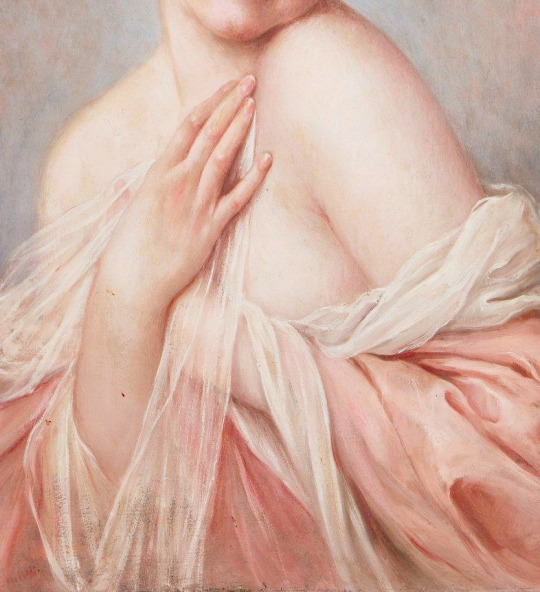
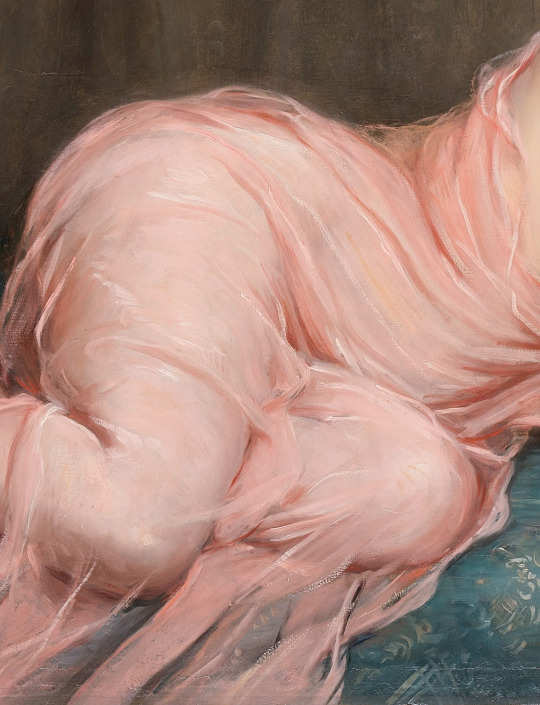
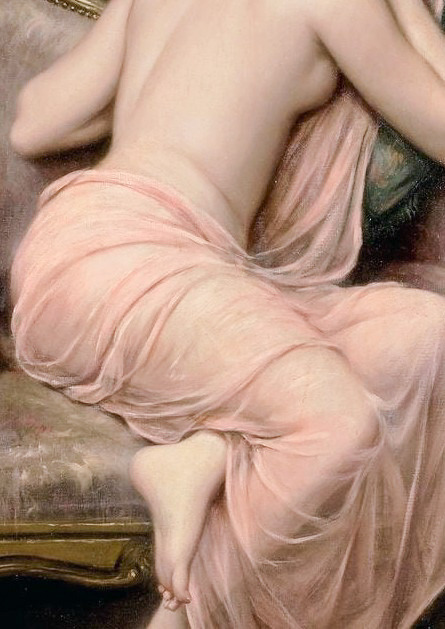
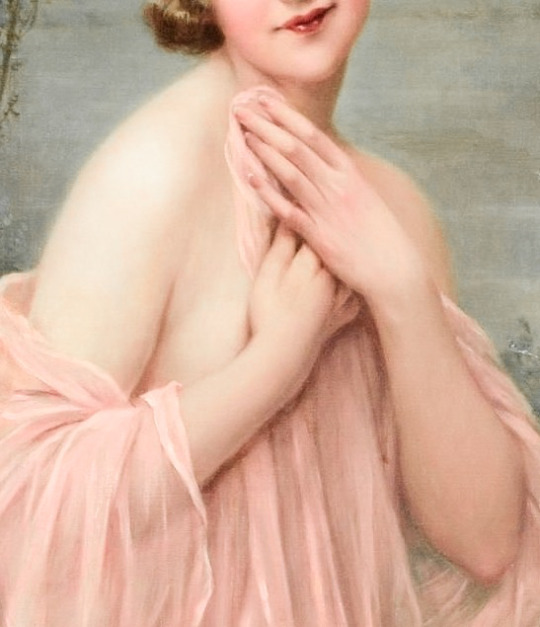
François Martin-Kavel & pink fabrics
French, 1861-1931
#art#painting#classical art#women in art#art detail#fine arts#art history#french art#François Martin-Kavel#pink aesthetic#pink#19th century art#19th century#fashion history#historical fashion#textiles#art lover#historical art#painting detail#light academia
19K notes
·
View notes
Text
One side effect of my research for this novel being steeped heavily in textile history is my swelling disgust with modern fabrics.
Firstly they're so thin? Like most things you see in Old Navy or even department stores might as well be tissue paper?? Even some branded sports t-shirts I've bought in recent years (that are supposed to be 'official apparel' and allegedly decent quality) are definitely not going to hold up more than a year or two without getting little holes from wear.
This side of even two hundred years ago fabrics were made to be used for YEARS, and that's with wearing them way more often because you only owned like three sets of clothes. They were thick and well made and most importantly made to LAST. And they were gorgeous?? Some of the weaves were so fine and the drape so buttery we still don't entirely know how these people managed to make them BY HAND. Not to mention intricate patterning and details that turned even some simple garments into freaking ART.
I know this is not news, the fast fashion phenomenon is well documented. Reading so much about the amazing fabrics we used to create and how we cherished and valued them, though, is making it hard not to mourn what we lost to mass production and capitalism. Not just the quality of the clothing and fabrics themselves, but the generations of knowledge and techniques that are just gone. It makes me what to cry.
I need to get a sewing machine.
#textile history#fast fashion#textiles#weaving history#novel research#mass production#late stage capitalism#capitalist hell#fiber arts
9K notes
·
View notes
Text


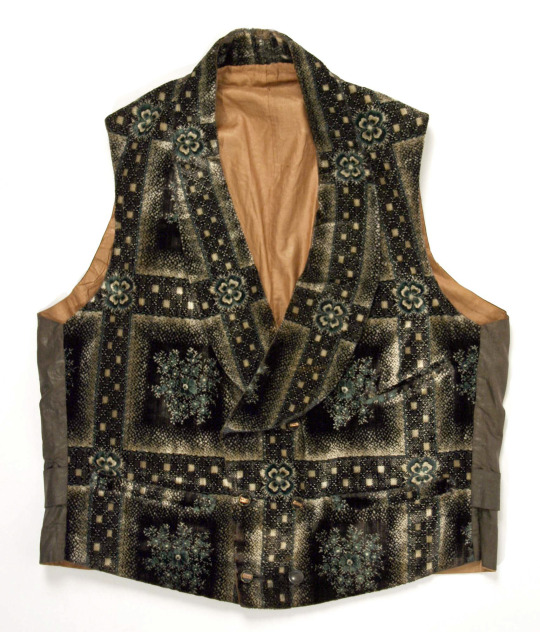
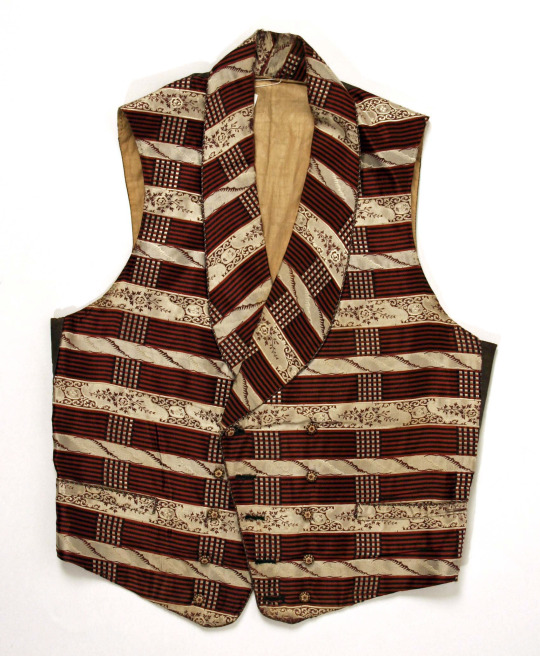


waistcoats, c. 1840s-50s.
3K notes
·
View notes